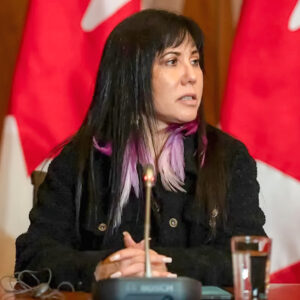
BRANT/BRANTFORD — Pre-confederation land patent holders on farms, which would arbitrarily transfer their patents rights from the Municipality of Brant to the Municipality of Brantford could have a case against the deal on constitutional grounds.
Decades before there was such a thing as Canada, the province or a single municipality, this area became one of the earliest hot spots for land patents dealt by the Crown of England to pretty well whomever. It was their strategy to encourage settlement and protect against possible counter-invasion from the south in the years following the Revolution.
Set aside the fact that this same Brantford area was already teeming with Haudenosaunee villages and communities by way of not only the Haldimand Deed, but their own usage of this part of the Grand River Valley in particular as a traditional hunting ground, shared in common with the Mississaugas for eons.
Among those receiving land directly from the Crown of England following the American Revolution were United Empire Loyalist settlers and Joseph Brant Mohawks and Cayugas, along with others of the Six Nations and members of smaller Nations under their protection. This was by way of the Haldimand Proclamation as directed by the King of England before 1784.
According to Elizabeth Marshall of the Ontario Land Owners Association, her extensive research has found that pre-confederation land patents fall under a very different set of rules than other lands granted since the 1867 British North American Act.
Although many are selling out to developers and others have no particular issue with the transfer, still others are comfortable with their privately owned property being passed around like so many chits on a poker table.
In her new book “Property Rights 101”, Marshall explains her position that the province, the federal and most importantly, the municipalities have no rights over land patents dated before 1867.
Marshall is the ‘Chair of Research’ for the Ontario Landowners Association (OLA) and continues to be a strong and outspoken advocate for private property rights.
She is well known throughout Ontario as a guest speaker at community events and as a frequent guest on radio broadcasts that have raised public awareness about the legal rights contained in Crown Land Patent Grants, according to her website.
On their website, the OLA writes, “Ms. Marshall draws inspiration from the Nullum Tempus Act of 1769 and cites it (as well as the Magna Carta) as foundations to her research work.” Sir George, however, was not discouraged; he renewed his motion in 1769, when it was carried by a large majority, with an additional clause extending its operation to the Colonies of North America; and thus, in respect of its territorial rights, the crown was placed on the same footing as any private individual, and the same length of tenure which enabled a possessor to hold property against another subject henceforth equally enabled him to hold it against the crown…” [The Constitutional History of England from 1760 to 1860, p. 53]
Marshall has been watching the goings on between Brant and Brantford regarding the questionable land transfer of around 3,000 acres of mostly farmland. She has taken an active interest in trying to educate lawyers, judges and politicians alike with what she has found.
When a politician, lawyer or judge takes their oath of office, they all pledge that they will “uphold the interests of the crown”, not necessarily justice or right.
“..so we are insisting that our crown grants are a contract from the King (crown) to us and they should not interfere with it,” says Marshall.
She is not alone in her opinion either.
“The rights that you are granted with the original grant, are to be passed down from heirs to assigns…meaning the rights stay with the land/property FOREVER,” according to Marlene Black, editor of Landowner Magazine.
The meat of this argument is quite similar to that facing the decedents of the Haldimand Proclamation, which is also a pre-constitutional land patent granted by the King of England himself.
To those who accept the Simcoe Patent of 1793, that too is pre-confederation.
In the case Citizens Insurance Company of Canada v. Parsons, and the Queens Insurance Company v. Parson from the Supreme Court of Canada delivered 26th Nov. 1881, the intent and interpretation of the BNA was re-examined.
In the case of the Attorney General vs. Mercer, it was determined that, “As the various levels of government are corporations, anything which is “in” the government must belong to the government as property of the specific corporation.
As also stated in Mercer, “privately owned property is not “in” the province. It is not “in” the federal government, and is not “in” municipalities as part of these entities’ administrative property.”
“That the Act of Parliament of Canada, 31 vict. C. 60, recognizes the view, and, while it provides for the regulation and protection of the fisheries, it does not interfere with private rights, only authorizing the granting of leases in fresh water rivers, where such rights have not already accrued, and that any lease granted by the Minister of Marine and Fisheries to fish in fresh water rivers which are not the property of the Dominion or in which the soil is NOT IN THE DOMINION is illegal according to the British North American Act of 1867 and its interpretation on page 165.
Marshall writes, “Once a municipality has been created, by Letters Patent, it is not “In the Province” and does not belong to the province and that is why Section #13 of the 1215 or section #9 of the 1297 Magna Carta still stands.”
But are municipalities really “creatures of the province,” as often heard?
“The statement that the municipalities are ‘creatures of the province’ is not necessarily true, because the municipalities are not necessarily the “creatures of the province,” according to Marshall. The municipalities were created at the petition of the property owners, they are the shareholders and they are the ones who have control, not the provinces.”
“… the provinces do not have the authority to legislate for private property, unless the private property owner petitions or asks for the provincial intervention for the property owners own property, writes Marshall.”
So the question remains. Does Brant Mayor Ron Eddy, Brantford Mayor Chris Friel, the province or the federals have any say in this matter at all? Some are beginning to wonder.









Ms. Marshalls book, Property Rights 101 is an excellent introductory education into Crown Grants. Her research is extensive and needs only to be court tested (again) to restore all of those rights which we have been illegally usurped by federal, provincial and municipal governments. We owe her a great debt of gratitude for her hard work and perseverance.